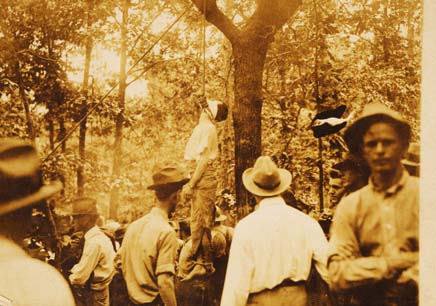20th-century Jewish Immigration
Lynching of Leo Frank (1915) *WARNING: Graphic Content*
Annotation
Leo Frank was a pencil factory supervisor, a Jewish man who had moved South, when 13-year-old employee Mary Phagan was found murdered in April 1913. Convicted in August 1913 after a dubious trial that cast him as both a Yankee and a Jewish outsider, Frank was sentenced to death despite the evidence that his defense team—in a clearly racist manner—presented against another factory worker, an African American man. Georgia governor John M. Slaton, skeptical about the trial, commuted Frank’s sentence to life imprisonment, and in August 1915 a mob of 25 men removed him from his jail cell and hanged him. The lynching sent shock waves throughout the American Jewish community, which had assumed that Jews were safe from European-style pogroms in the land of the free and the home of the brave.

Marietta, Georgia. Lynching of Leo Frank. August 17, 1915. From the Library of Congress, Prints and Photographs Collection.
